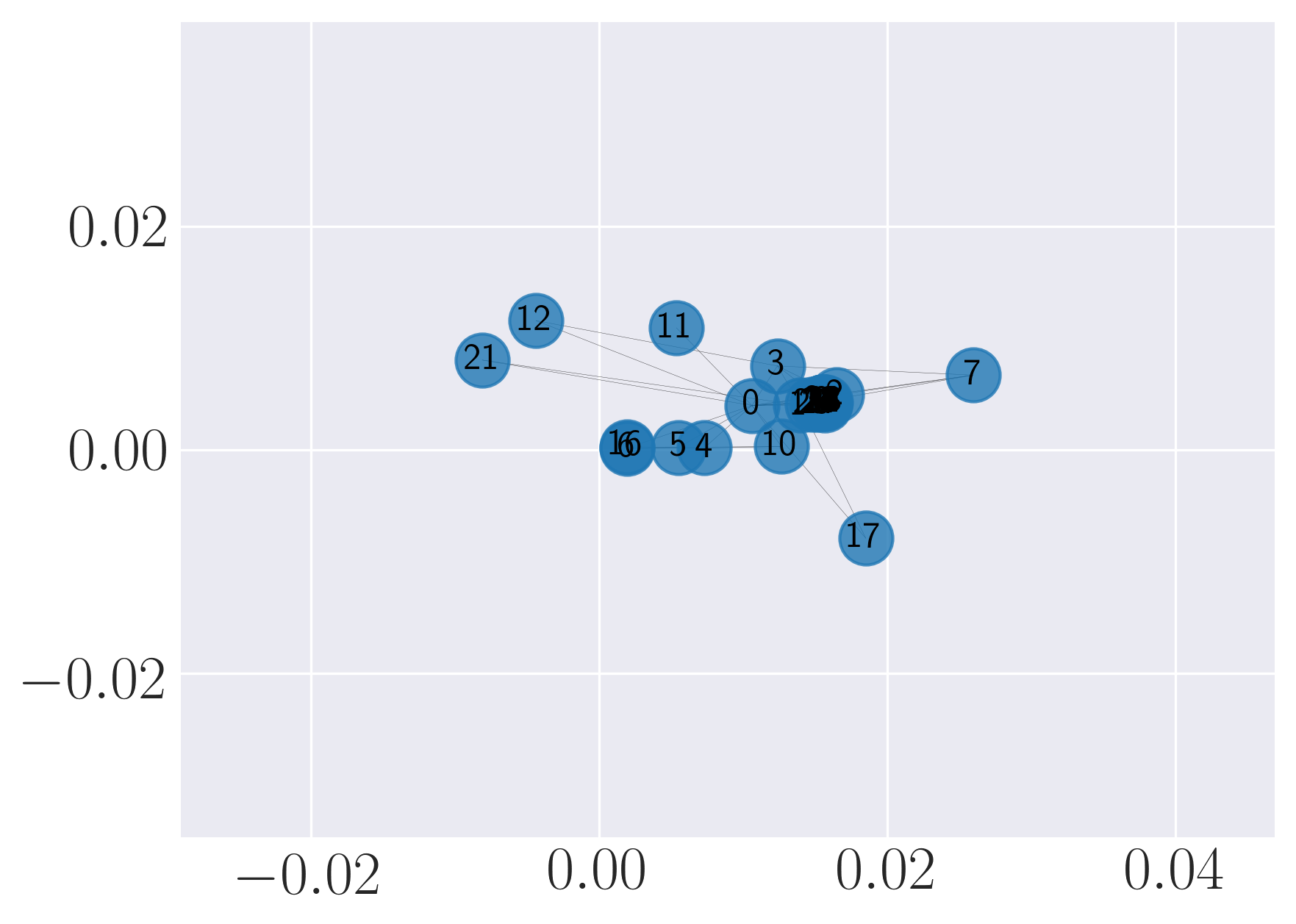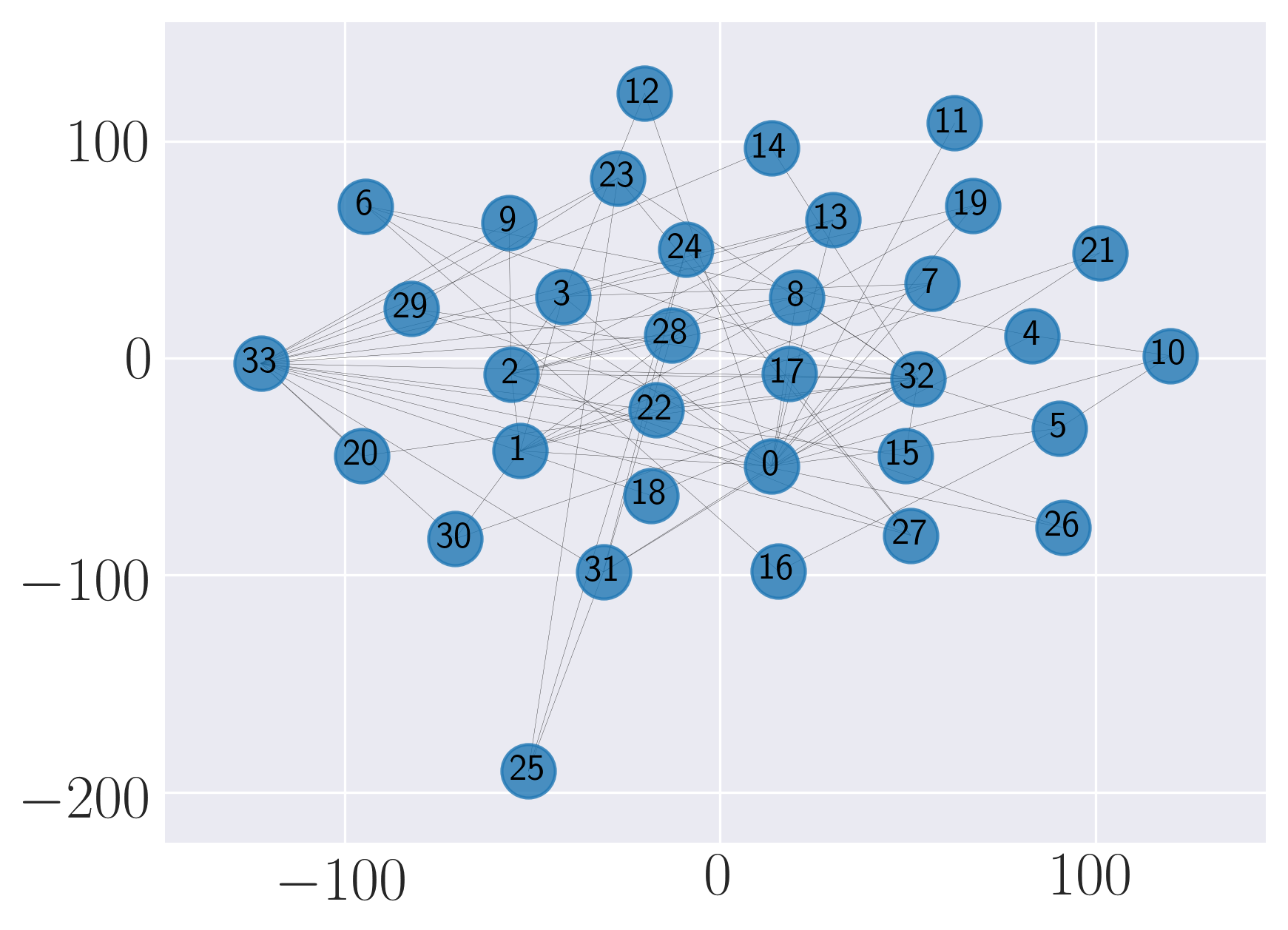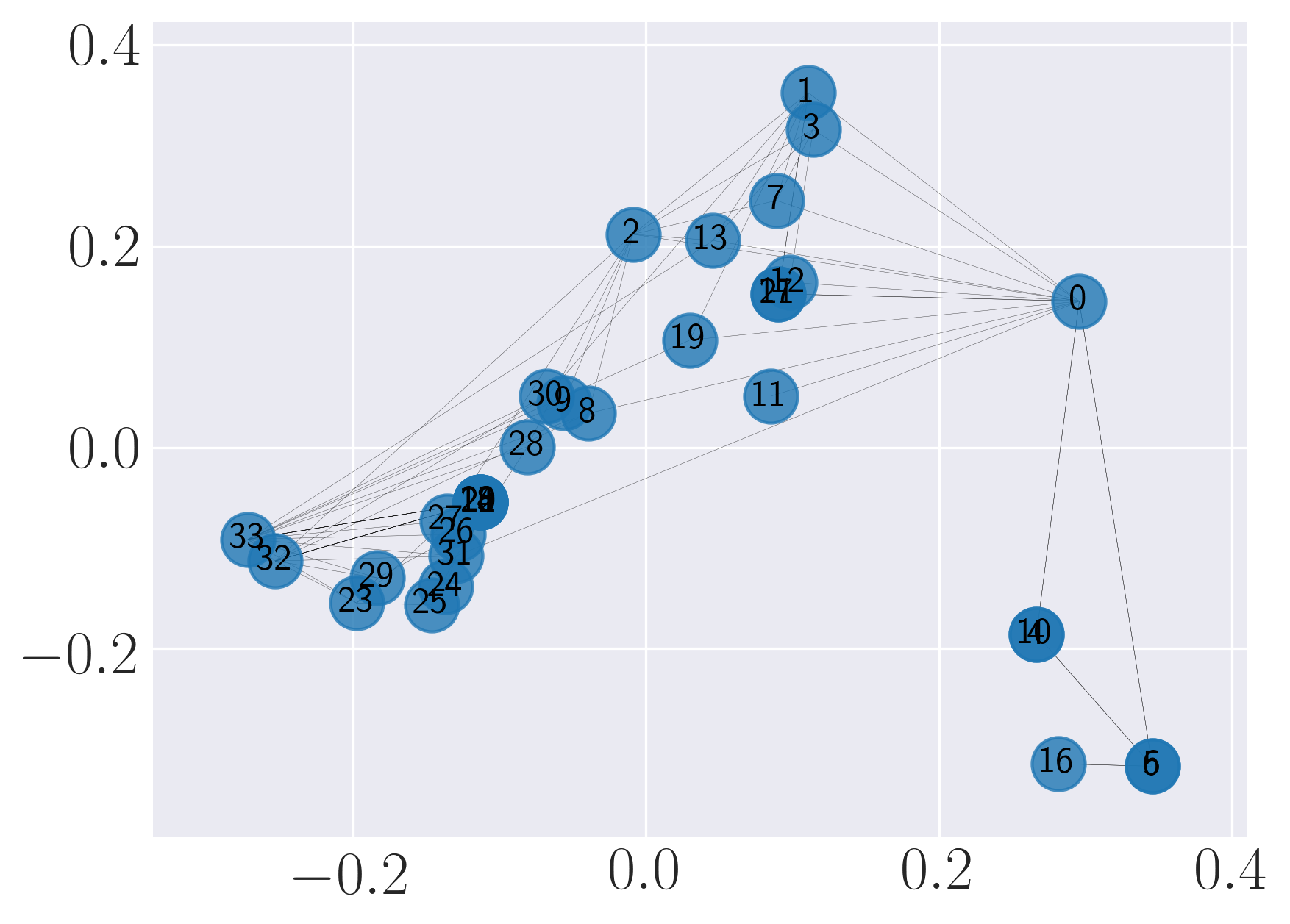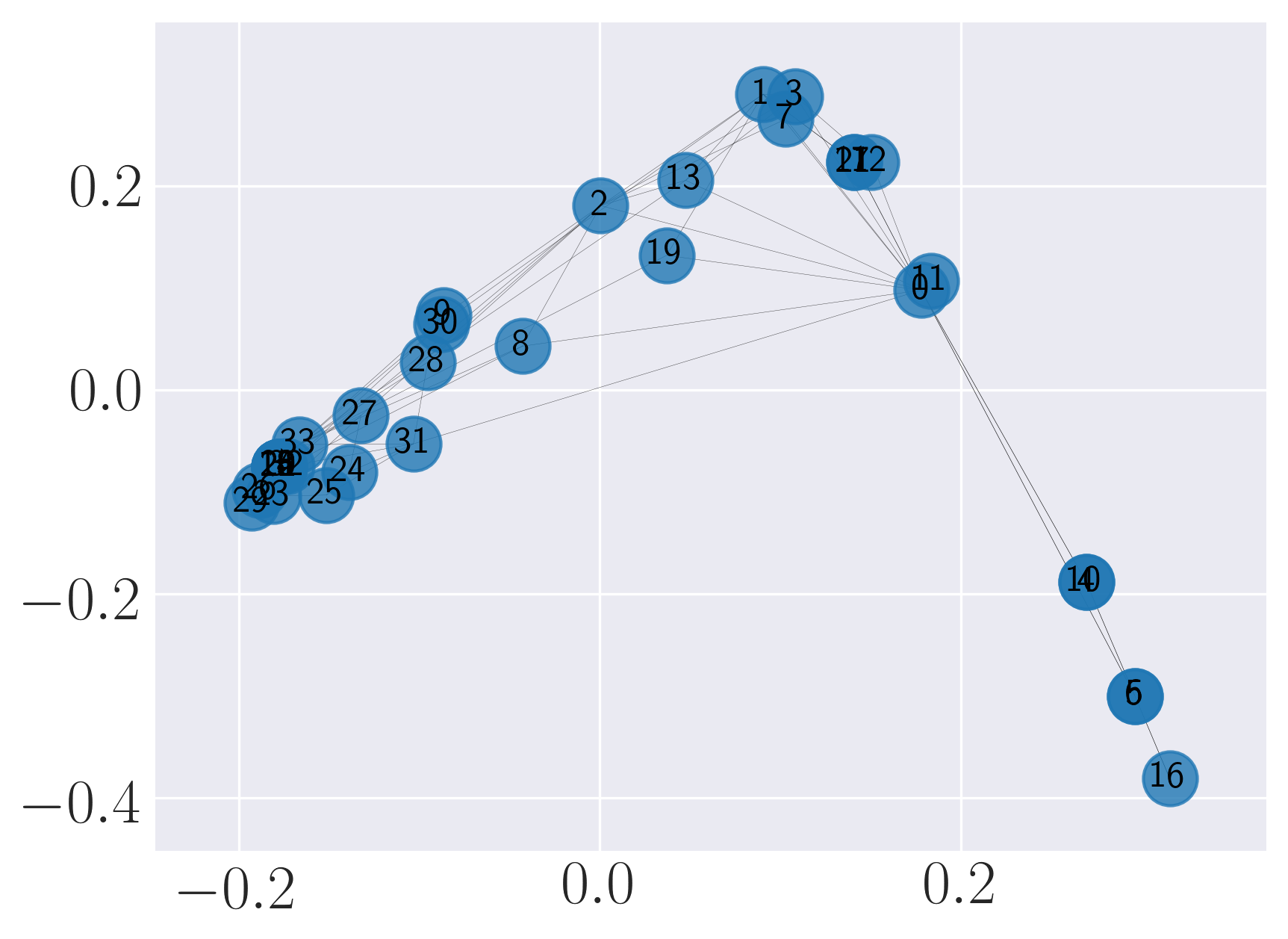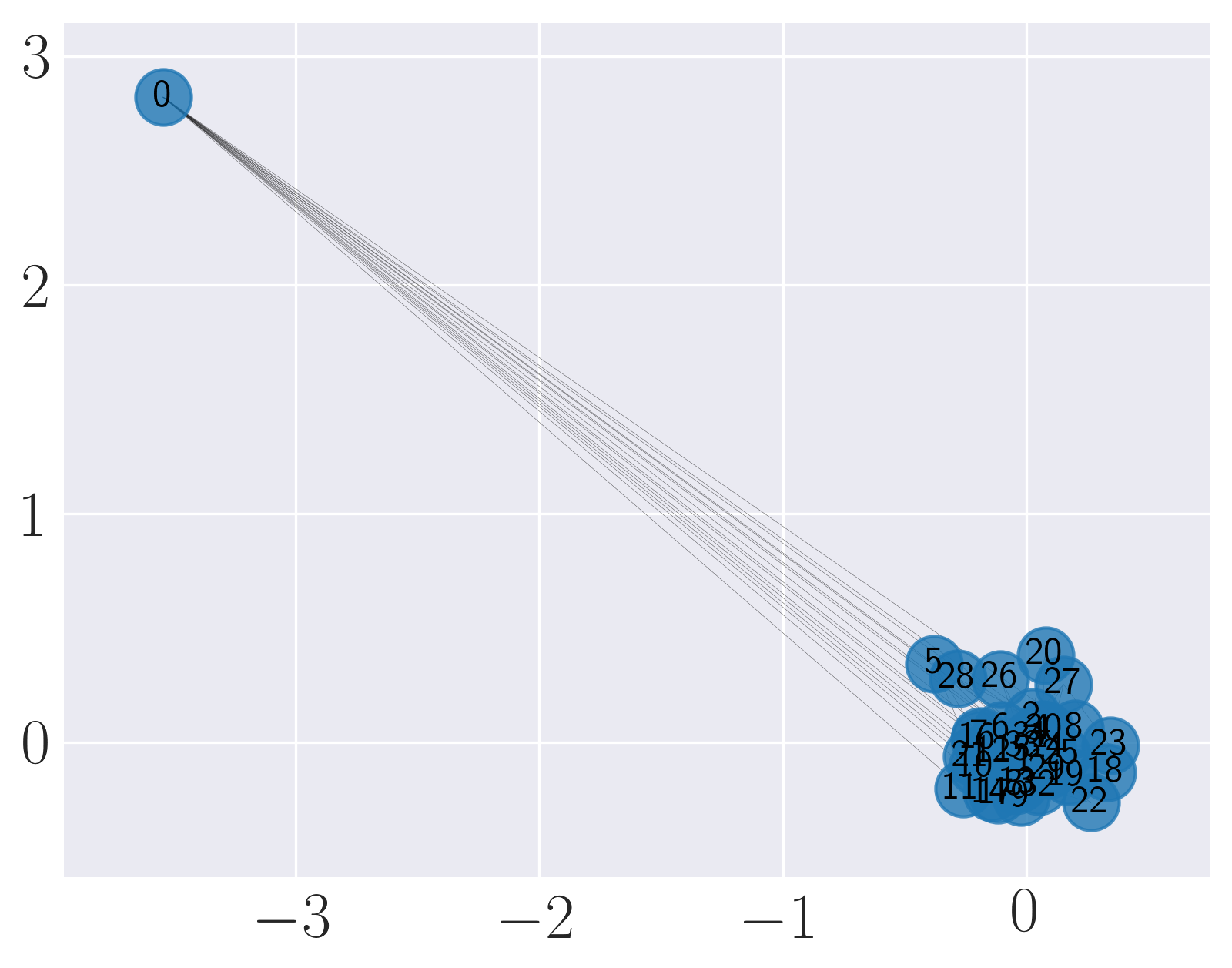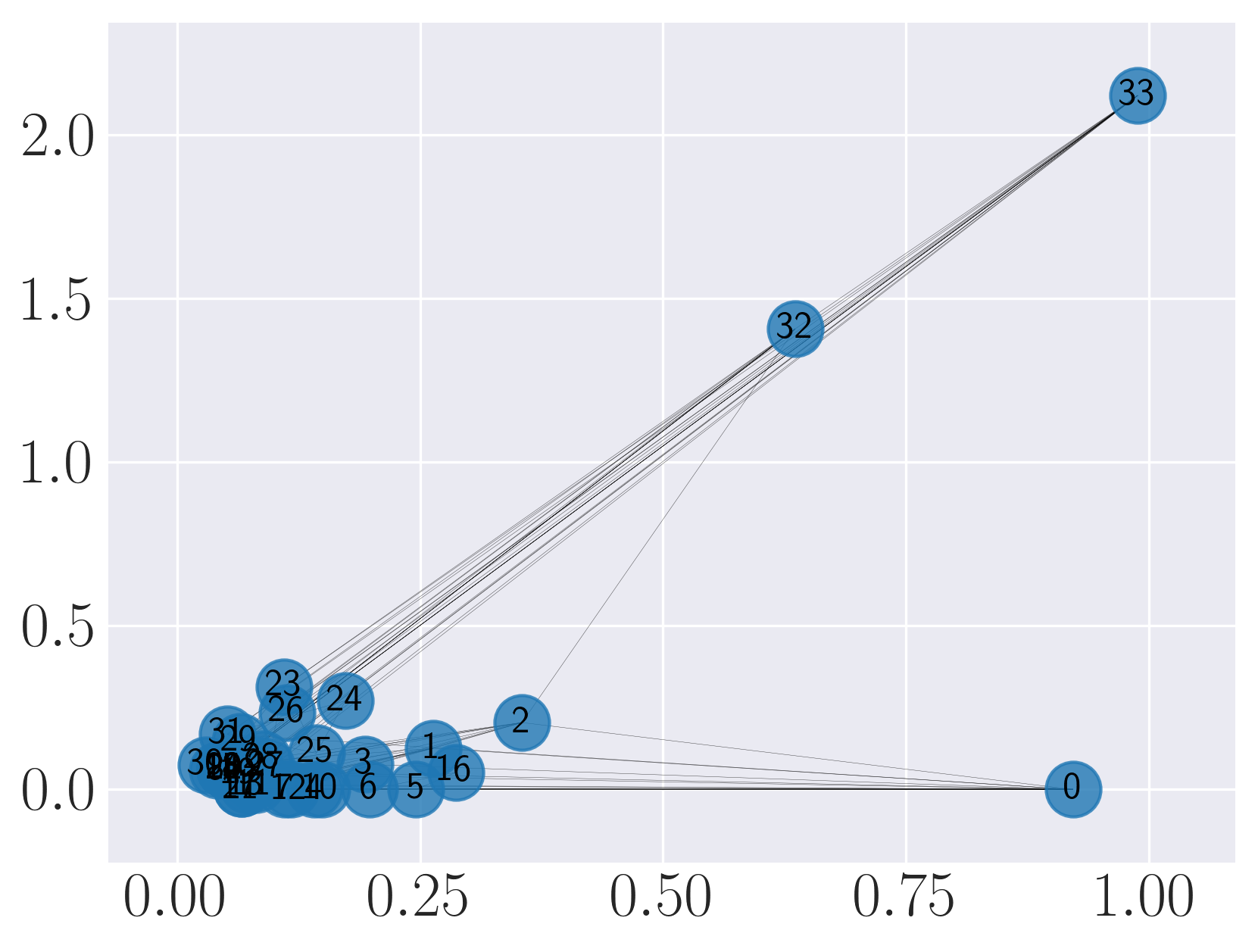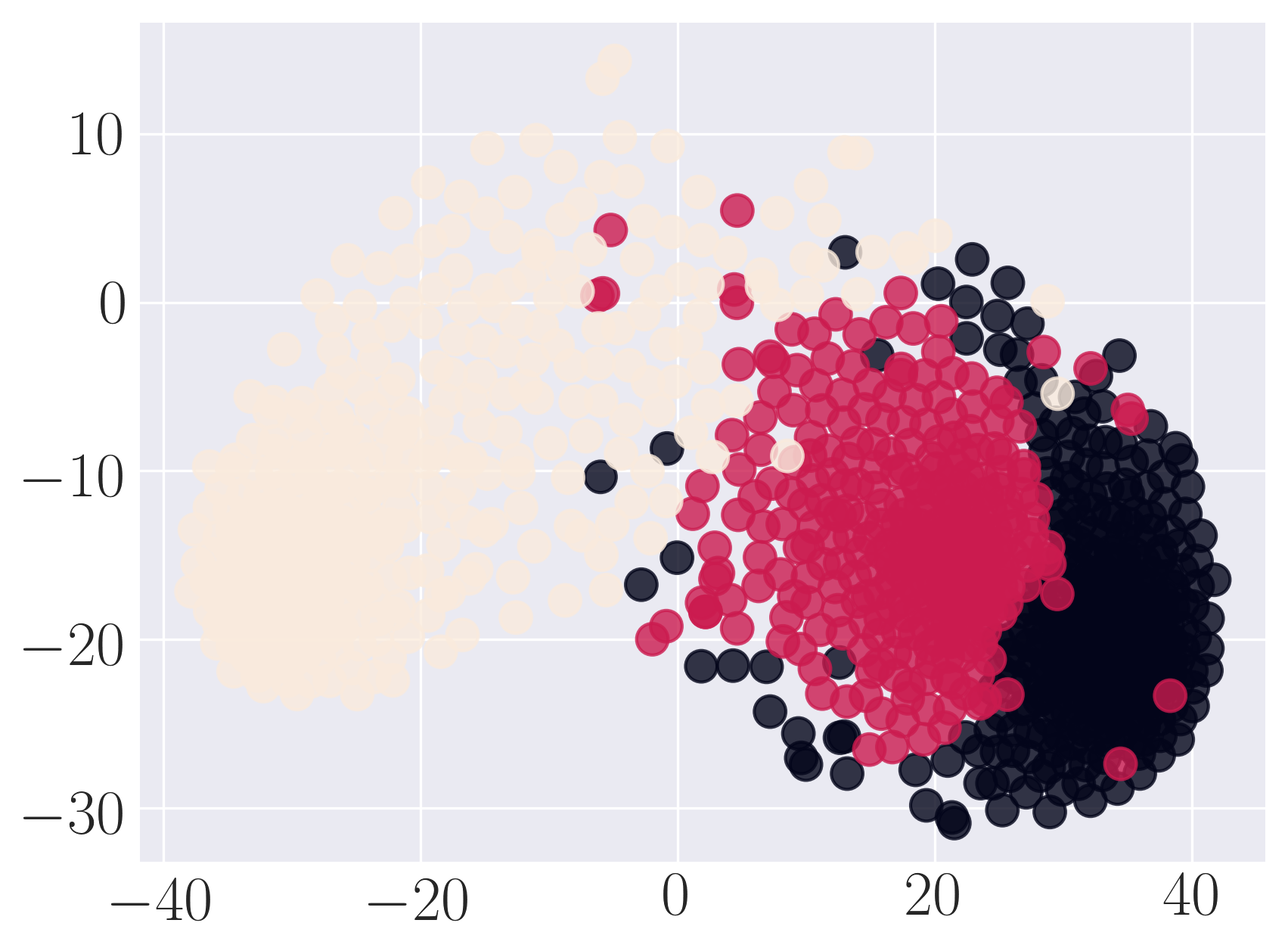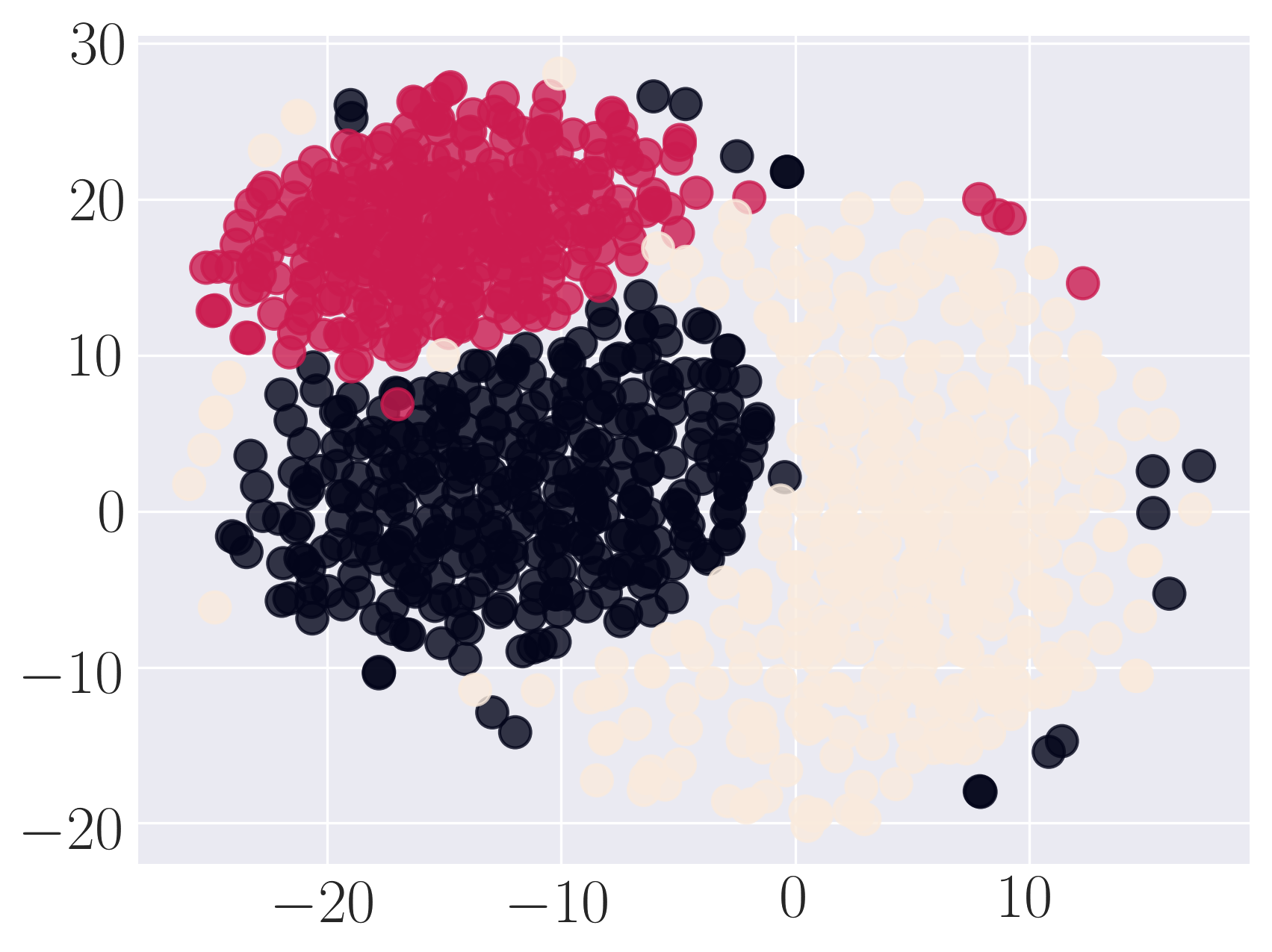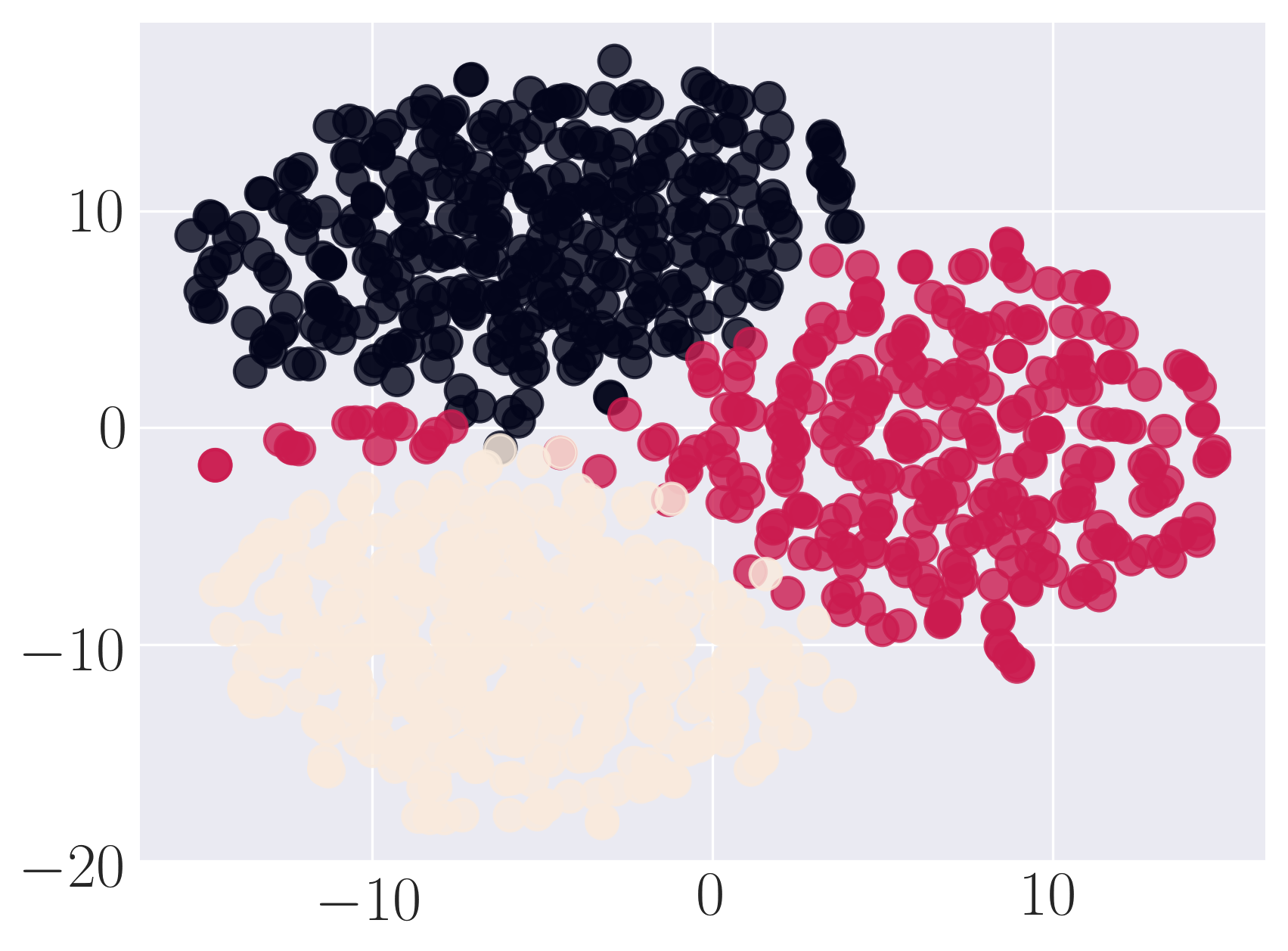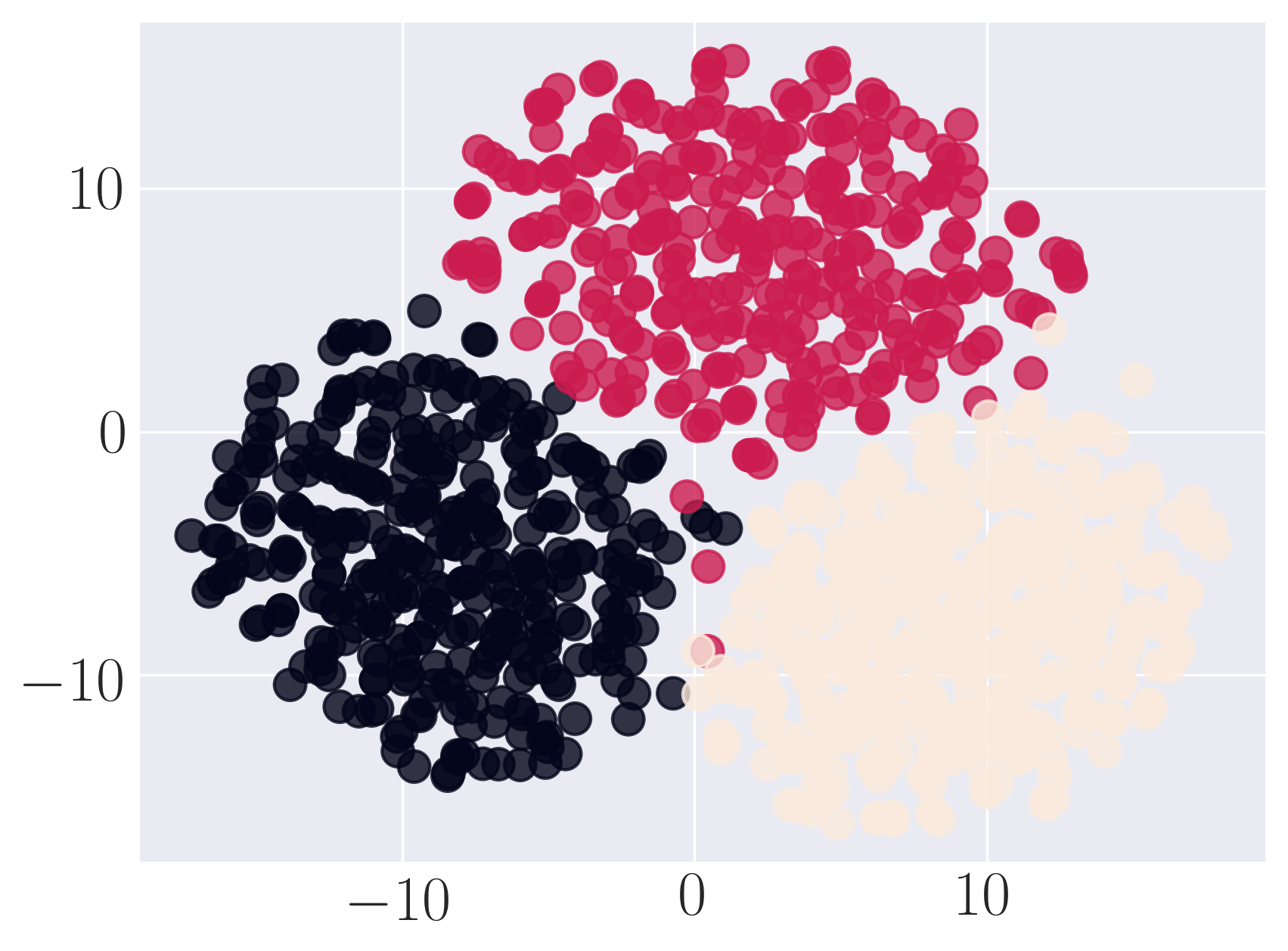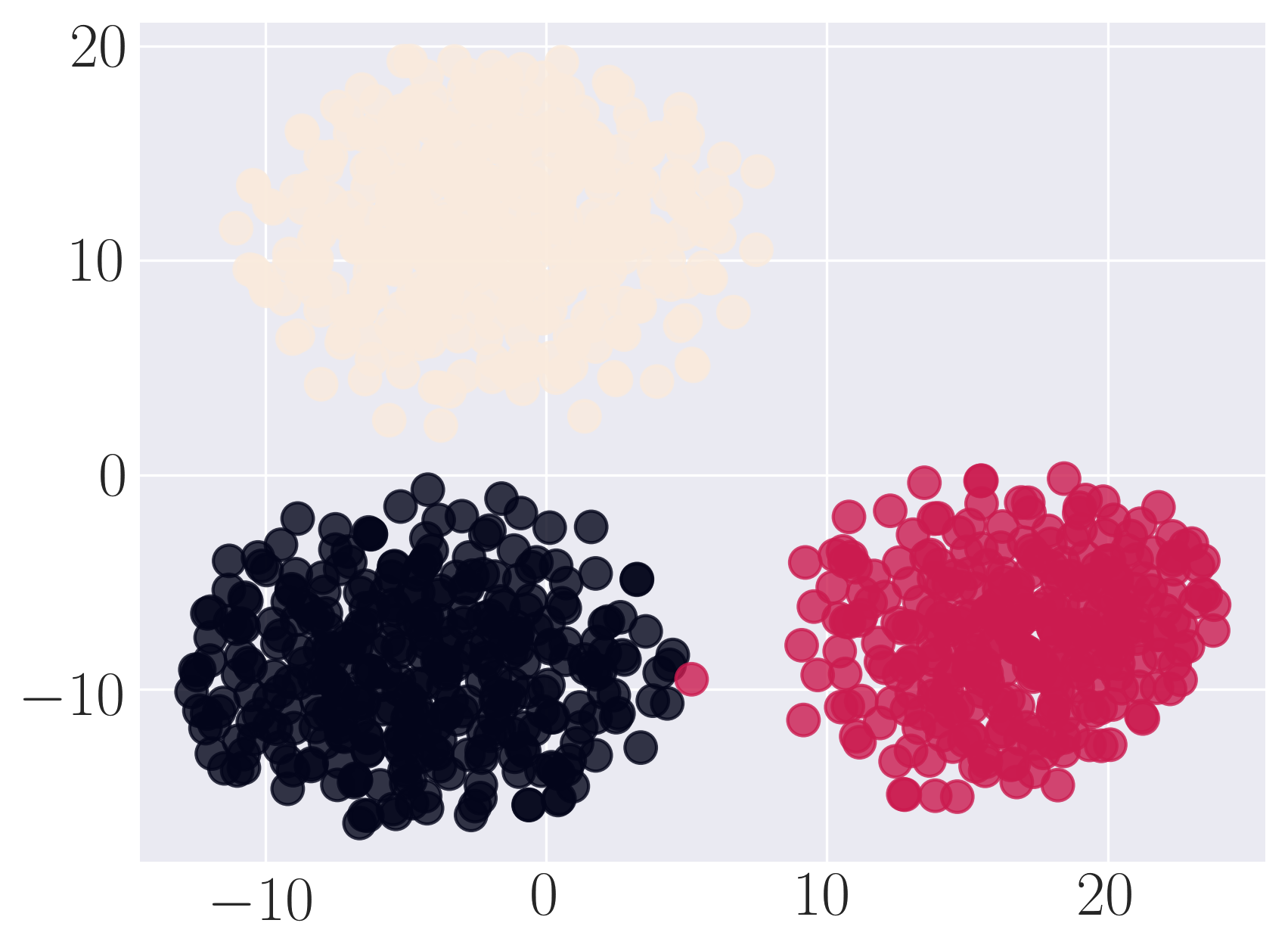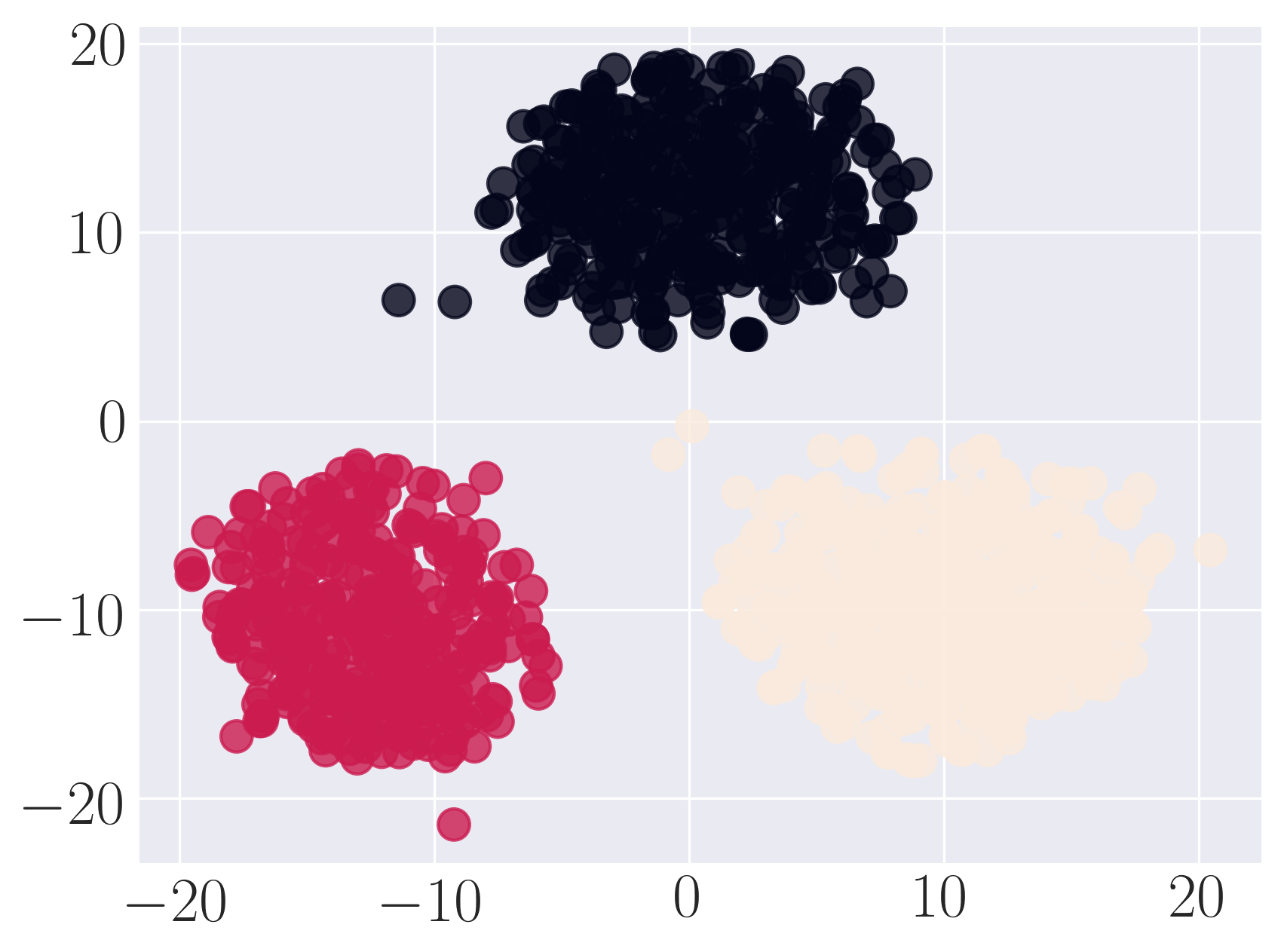palash1992 / Gem
Programming Languages
Labels
Projects that are alternatives of or similar to Gem
GEM: Graph Embedding Methods
Many physical systems in the world involve interactions between different entities and can be represented as graphs. Understanding the structure and analyzing properties of graphs are hence paramount to developing insights into the physical systems. Graph embedding, which aims to represent a graph in a low dimensional vector space, takes a step in this direction. The embeddings can be used for various tasks on graphs such as visualization, clustering, classification and prediction.
GEM is a Python package which offers a general framework for graph embedding methods. It implements many state-of-the-art embedding techniques including Locally Linear Embedding, Laplacian Eigenmaps, Graph Factorization, Higher-Order Proximity preserved Embedding (HOPE), Structural Deep Network Embedding (SDNE) and node2vec. It is formatted such that new methods can be easily added for comparison. Furthermore, the framework implements several functions to evaluate the quality of obtained embedding including graph reconstruction, link prediction, visualization and node classification. It supports many edge reconstruction metrics including cosine similarity, euclidean distance and decoder based. For node classification, it defaults to one-vs-rest logistic regression classifier and supports other classifiers. For faster execution, C++ backend is integrated using Boost for supported methods. A paper showcasing the results using GEM on various real world datasets can be accessed through Graph Embedding Techniques, Applications, and Performance: A Survey. The library is also published as GEM: A Python package for graph embedding methods.
Please refer https://palash1992.github.io/GEM/ to access the readme as a webpage.
Update: Note that this is a library for static graph embedding methods. For evolving graph embedding methods, please refer DynamicGEM. We also recently released Youtube dynamic graph data set which can be found at YoutubeGraph-Dyn.
The module was developed and is maintained by Palash Goyal.
Implemented Methods
GEM implements the following graph embedding techniques:
- Laplacian Eigenmaps
- Locally Linear Embedding
- Graph Factorization
- Higher-Order Proximity preserved Embedding (HOPE)
- Structural Deep Network Embedding (SDNE)
- node2vec
A survey of these methods can be found in Graph Embedding Techniques, Applications, and Performance: A Survey.
Graph Format
We store all graphs using the DiGraph as directed weighted graph in python package networkx. The weight of an edge is stored as attribute "weight". We save each edge in undirected graph as two directed edges.
The graphs are saved using nx.write_gpickle in the networkx format and can be loaded by using nx.read_gpickle.
Repository Structure
- gem/embedding: existing approaches for graph embedding, where each method is a separate file
- gem/evaluation: evaluation tasks for graph embedding, including graph reconstruction, link prediction, node classification and visualization
- gem/utils: utility functions for graph manipulation, evaluation and etc.
- gem/data: input test graph (currently has Zachary's Karate graph)
- gem/c_src: source files for methods implemented in C++
- gem/c_ext: Python interface for source files in c_src using Boost.Python
Dependencies
GEM is tested to work on Python 2.7 and Python 3.6
The required dependencies are: Numpy >= 1.12.0, SciPy >= 0.19.0, Networkx == 2.4, Scikit-learn >= 0.18.1.
To run SDNE, GEM requires Theano >= 0.9.0 and Keras = 2.0.2.
In case of Python 3, make sure it was compiled with ./configure --enable-shared, and that you have /usr/local/bin/python in your LD_LIBRARY_PATH.
Install
The package uses setuptools, which is a common way of installing python modules. To install in your home directory, use:
python setup.py install --user
To install for all users on Unix/Linux:
sudo python setup.py install
Or installing via pipwith git:
pip install git+https://github.com/palash1992/GEM.git
You also can use python3 instead of python.
To install node2vec as part of the package, recompile from https://github.com/snap-stanford/snap and add node2vec executable to system path. To grant executable permission, run: chmod +x node2vec
Usage
Example 1: Karate Graph
Run the methods on Karate graph and evaluate them on graph reconstruction and visualization. The data is located in examples/data. The example can be run from examples folder as python test_karate.py -node2vec 0 (use -node2vec 1 to also run node2vec model):
import matplotlib.pyplot as plt
from gem.utils import graph_util, plot_util
from gem.evaluation import visualize_embedding as viz
from gem.evaluation import evaluate_graph_reconstruction as gr
from time import time
from gem.embedding.gf import GraphFactorization
from gem.embedding.hope import HOPE
from gem.embedding.lap import LaplacianEigenmaps
from gem.embedding.lle import LocallyLinearEmbedding
from gem.embedding.node2vec import node2vec
from gem.embedding.sdne import SDNE
# File that contains the edges. Format: source target
# Optionally, you can add weights as third column: source target weight
edge_f = 'karate.edgelist'
# Specify whether the edges are directed
isDirected = True
# Load graph
G = graph_util.loadGraphFromEdgeListTxt(edge_f, directed=isDirected)
G = G.to_directed()
models = []
# You can comment out the methods you don't want to run
# GF takes embedding dimension (d), maximum iterations (max_iter), learning rate (eta), regularization coefficient (regu) as inputs
models.append(GraphFactorization(d=2, max_iter=100000, eta=1*10**-4, regu=1.0, data_set='karate'))
# HOPE takes embedding dimension (d) and decay factor (beta) as inputs
models.append(HOPE(d=4, beta=0.01))
# LE takes embedding dimension (d) as input
models.append(LaplacianEigenmaps(d=2))
# LLE takes embedding dimension (d) as input
models.append(LocallyLinearEmbedding(d=2))
# node2vec takes embedding dimension (d), maximum iterations (max_iter), random walk length (walk_len), number of random walks (num_walks), context size (con_size), return weight (ret_p), inout weight (inout_p) as inputs
models.append(node2vec(d=2, max_iter=1, walk_len=80, num_walks=10, con_size=10, ret_p=1, inout_p=1))
# SDNE takes embedding dimension (d), seen edge reconstruction weight (beta), first order proximity weight (alpha), lasso regularization coefficient (nu1), ridge regreesion coefficient (nu2), number of hidden layers (K), size of each layer (n_units), number of iterations (n_ite), learning rate (xeta), size of batch (n_batch), location of modelfile and weightfile save (modelfile and weightfile) as inputs
models.append(SDNE(d=2, beta=5, alpha=1e-5, nu1=1e-6, nu2=1e-6, K=3, n_units=[50, 15,], n_iter=50, xeta=0.01, n_batch=500,
modelfile=['enc_model.json', 'dec_model.json'],
weightfile=['enc_weights.hdf5', 'dec_weights.hdf5']))
for embedding in models:
print ('Num nodes: %d, num edges: %d' % (G.number_of_nodes(), G.number_of_edges()))
t1 = time()
# Learn embedding - accepts a networkx graph or file with edge list
Y, t = embedding.learn_embedding(graph=G, edge_f=None, is_weighted=True, no_python=True)
print (embedding._method_name+':\n\tTraining time: %f' % (time() - t1))
# Evaluate on graph reconstruction
MAP, prec_curv, err, err_baseline = gr.evaluateStaticGraphReconstruction(G, embedding, Y, None)
#---------------------------------------------------------------------------------
print(("\tMAP: {} \t precision curve: {}\n\n\n\n"+'-'*100).format(MAP,prec_curv[:5]))
#---------------------------------------------------------------------------------
# Visualize
viz.plot_embedding2D(embedding.get_embedding(), di_graph=G, node_colors=None)
plt.show()
The output of the above execution is:
---------graph_factor_sgd:
Training time: 0.459782 MAP: 0.418189831501 precision curve: [1.0, 0.5, 0.6666666666666666, 0.5, 0.4]
---------hope_gsvd:
Training time: 0.002792 MAP: 0.834648134445 precision curve: [1.0, 1.0, 1.0, 1.0, 1.0]
---------lap_eigmap_svd:
Training time: 0.015966 MAP: 0.511774195685 precision curve: [1.0, 1.0, 0.6666666666666666, 0.5, 0.4]
---------lle_svd:
Training time: 0.017661 MAP: 0.625323321278 precision curve: [1.0, 1.0, 0.6666666666666666, 0.5, 0.4]
---------node2vec_rw:
Training time: 0.335455 MAP: 0.402896048616 precision curve: [0.0, 0.5, 0.3333333333333333, 0.25, 0.2]
---------sdne:
Training time: 13.969912 MAP: 0.635860976597 precision curve: [0.0, 0.0, 0.0, 0.25, 0.4]
We observe that HOPE, LLE and SDNE achieve high MAP values. Furthermore, HOPE can predict top 5 links with perfect accuracy.
Visualization of Karate graph using Graph Factorization
Visualization of Karate graph using HOPE
Visualization of Karate graph using Laplacian Eigenmaps
Visualization of Karate graph using Locally Linear Embedding
Visualization of Karate graph using node2vec
Visualization of Karate graph using SDNE
We observe from the visualizations that Locally Linear Embedding and Laplacian Eigenmaps attempt to preserve the community structure of the graph and cluster nodes with high intra-cluster edges together. Graph Factorization embeds communities very closely and keeps leaf nodes far away from other nodes. HOPE embeds nodes with low Katz similarity in the original graph farthest apart (considering dot product similarity). node2vec and SDNE preserve a mix of community structure and structural property of the nodes. In SDNE, nodes 32 and 33, which are both high degree hubs and central in their communities, are embedded together and away from low degree nodes. Also, they are closer to nodes which belong to their communities. SDNE embeds node 0, which acts as a bridge between communities, far away from other nodes. Note that, unlike for other methods, it does not imply that node 0 is disconnected from the rest of the nodes. The implication here is that SDNE identifies node 0 as a separate type of node and encodes its connection to other nodes in encoder and decoder. Note that different runs of the algorithms may give different embeddings and visualizations but the properties preserved by the embeddings for a method are similar.
Example 2: Stochastic Block Model
Run the graph embedding methods on Stochastic Block Model graph and evaluate them on graph reconstruction and visualization. The data is located in examples/data. The example can be run from examples folder as python test_sbm.py -node2vec 0 (use -node2vec 1 to also run node2vec model):
import matplotlib.pyplot as plt
from time import time
import networkx as nx
try: import cPickle as pickle
except: import pickle
import numpy as np
from gem.utils import graph_util, plot_util
from gem.evaluation import visualize_embedding as viz
from gem.evaluation import evaluate_graph_reconstruction as gr
from gem.embedding.gf import GraphFactorization
from gem.embedding.hope import HOPE
from gem.embedding.lap import LaplacianEigenmaps
from gem.embedding.lle import LocallyLinearEmbedding
from gem.embedding.node2vec import node2vec
from gem.embedding.sdne import SDNE
# File that contains the edges. Format: source target
# Optionally, you can add weights as third column: source target weight
file_prefix = 'sbm.gpickle'
# Specify whether the edges are directed
isDirected = True
# Load graph
G = nx.read_gpickle(file_prefix)
node_colors = pickle.load(
open('sbm_node_labels.pickle', 'rb')
)
node_colors_arr = [None] * node_colors.shape[0]
for idx in range(node_colors.shape[0]):
node_colors_arr[idx] = np.where(node_colors[idx, :].toarray() == 1)[1][0]
models = []
# Load the models you want to run
models.append(GraphFactorization(d=128, max_iter=1000, eta=1 * 10**-4, regu=1.0, data_set='sbm'))
models.append(HOPE(d=256, beta=0.01))
models.append(LaplacianEigenmaps(d=128))
models.append(LocallyLinearEmbedding(d=128))
models.append(node2vec(d=182, max_iter=1, walk_len=80, num_walks=10, con_size=10, ret_p=1, inout_p=1, data_set='sbm'))
models.append(SDNE(d=128, beta=5, alpha=1e-5, nu1=1e-6, nu2=1e-6, K=3,n_units=[500, 300,], rho=0.3, n_iter=30, xeta=0.001,n_batch=500,
modelfile=['enc_model.json', 'dec_model.json'],
weightfile=['enc_weights.hdf5', 'dec_weights.hdf5']))
# For each model, learn the embedding and evaluate on graph reconstruction and visualization
for embedding in models:
print ('Num nodes: %d, num edges: %d' % (G.number_of_nodes(), G.number_of_edges()))
t1 = time()
# Learn embedding - accepts a networkx graph or file with edge list
Y, t = embedding.learn_embedding(graph=G, edge_f=None, is_weighted=True, no_python=True)
print (embedding._method_name+':\n\tTraining time: %f' % (time() - t1))
# Evaluate on graph reconstruction
MAP, prec_curv, err, err_baseline = gr.evaluateStaticGraphReconstruction(G, embedding, Y, None)
#---------------------------------------------------------------------------------
print(("\tMAP: {} \t precision curve: {}\n\n\n\n"+'-'*100).format(MAP,prec_curv[:5]))
#---------------------------------------------------------------------------------
# Visualize
viz.plot_embedding2D(embedding.get_embedding(), di_graph=G, node_colors=node_colors_arr)
plt.show()
plt.clf()
The output of the above execution is:
---------graph_factor_sgd:
Training time: 29.737146 MAP: 0.277151904249 precision curve: [0.0, 0.0, 0.0, 0.25, 0.4]
---------hope_gsvd:
Training time: 0.958994 MAP: 0.890902438959 precision curve: [1.0, 1.0, 1.0, 1.0, 1.0]
---------lap_eigmap_svd:
Training time: 1.503408 MAP: 0.800184495989 precision curve: [1.0, 1.0, 1.0, 1.0, 1.0]
---------lle_svd:
Training time: 1.129614 MAP: 0.798619223648 precision curve: [1.0, 1.0, 1.0, 1.0, 1.0]
---------node2vec_rw:
Training time: 10.524429 MAP: 0.134420246906 precision curve: [0.0, 0.0, 0.0, 0.0, 0.0]
---------sdne:
Training time: 667.998180 MAP: 0.9912109375 precision curve: [1.0, 1.0, 1.0, 1.0, 1.0]
We observe that SDNE can reconstruct SBM network with high MAP and precision. Among the rest, HOPE performs well.
Visualization of SBM using Graph Factorization
Visualization of SBM using HOPE
Visualization of SBM using Laplacian Eigenmaps
Visualization of SBM using Locally Linear Embedding
Visualization of SBM using node2vec
Visualization of SBM using SDNE
Cite
@article{goyal2017graph,
title = "Graph embedding techniques, applications, and performance: A survey",
journal = "Knowledge-Based Systems",
year = "2018",
issn = "0950-7051",
doi = "https://doi.org/10.1016/j.knosys.2018.03.022",
url = "http://www.sciencedirect.com/science/article/pii/S0950705118301540",
author = "Palash Goyal and Emilio Ferrara",
keywords = "Graph embedding techniques, Graph embedding applications, Python graph embedding methods GEM library"
}
@article{goyal3gem,
title={GEM: A Python package for graph embedding methods},
author={Goyal, Palash and Ferrara, Emilio},
journal={Journal of Open Source Software},
volume={3},
number={29},
pages={876}
}

